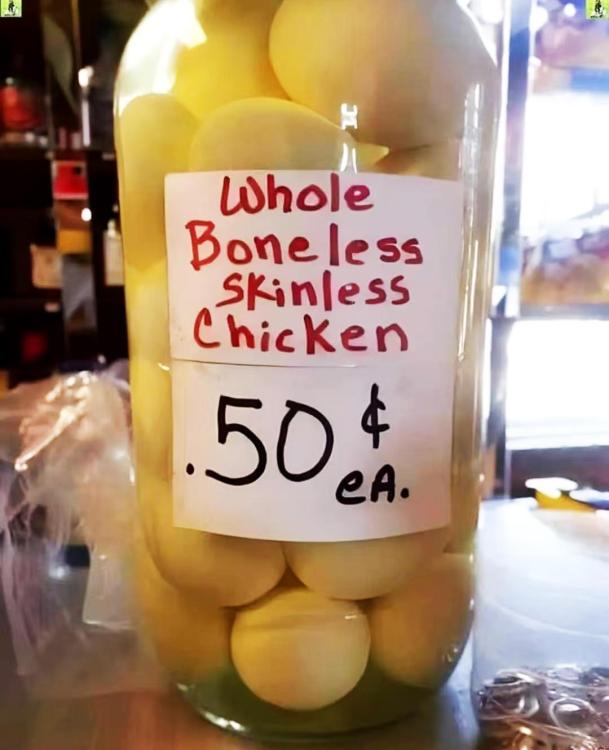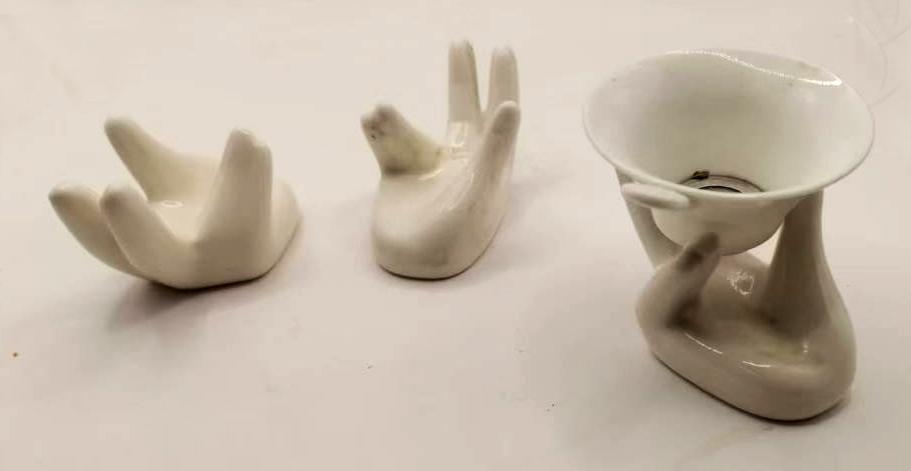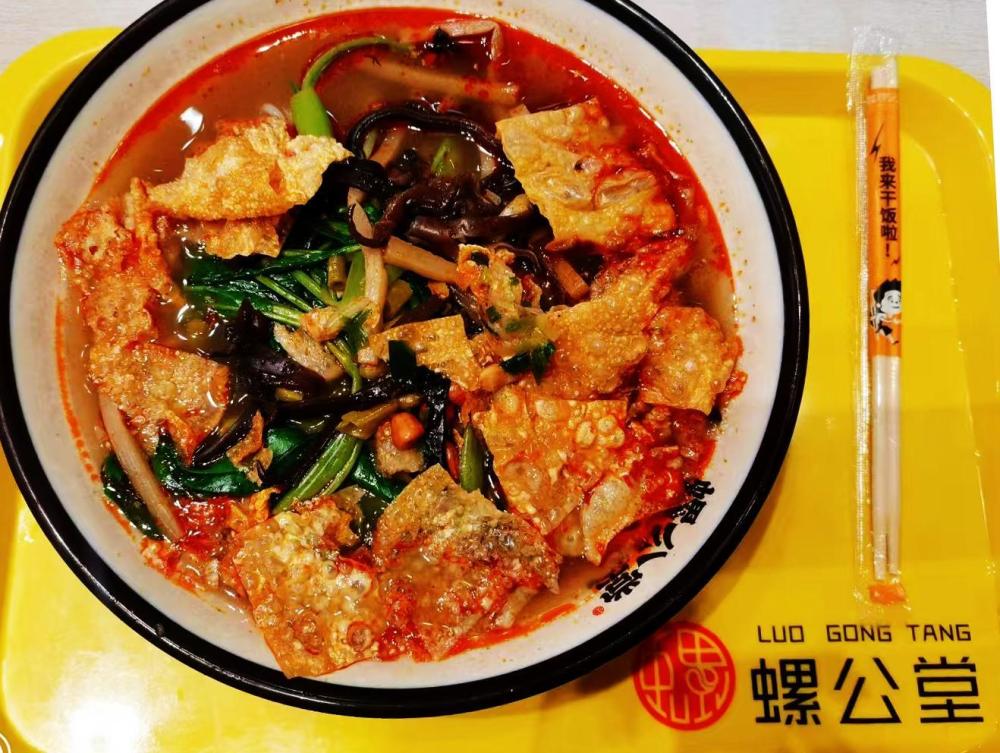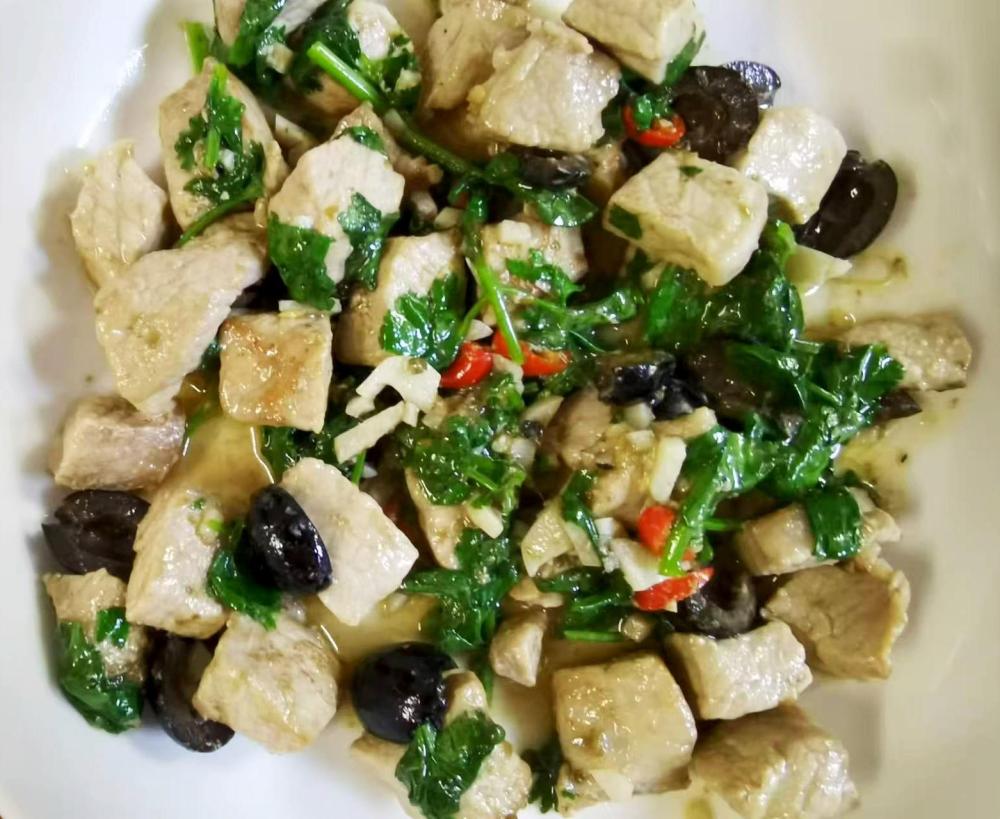-
Posts
16,681 -
Joined
-
Last visited
Content Type
Profiles
Forums
Store
Help Articles
Everything posted by liuzhou
-
so lado means chilli in Bahasa? No. It's Minang dialect. Cabai in Bahasa, as you say.
-
What is wrong with these people? I don't want potatoes made of plants; I want regular normal potatoes, not fakes! Sad fools! Here below is a primer on real potatoes.
-
I have no doubt there are occasions where surface temperatures matter in culinary contexts but in 70+ years, I've never met one. I do have a gun type thermometer but rarely use it. The Thermopen gets almost all the work. Maybe just my cooking but internal temp is what I'm interested in.
-
Reviving this just to show you one picture which made me inordinately happy. Yet another friend's daughter (who always makes me laugh or smile) went picking vegetables from her Grandma's garden. So happily proud of her work!
- 58 replies
-
- 10
-

-

-
This reminds of an unrelated anecdote from about 40 years ago. I had occasion to send a fax to an Indian colleague (in India - I was in London). I asked a new secretary to send it to Mr Anil Gupta and gave her the number. Somehow she managed to render that into Anal Tiptoe. She took my message, put it into an envelope, wrote "For the attention of Mr. Anal Tiptoe" on the envelope and faxed the envelope! Fortunately Mr. Gupta had a good sense of humour. The secretary didn't last the week!
-
The Guardian's article on the same story lists the ingredients pointing out that in addition to the usual pasta and eggs
-
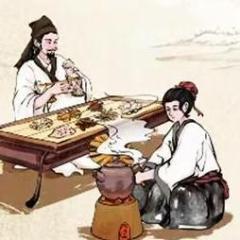
Countertop Double Burner non-induction cooktop and a "Griddler"?
liuzhou replied to a topic in Kitchen Consumer
Here's the link. For some reason the eG friendly link isn't working. -
Maybe, but I've always chilled the eggs. I often use quail eggs, but it's only in Scotch eggs I struggle. i look forward to your findings.
-
Same problem I've always had (apart from the splitting; never had that). Just getting the eggs right.
-
and another, more serious piece from the BBC.
-
So do I. I think I have 10 of them. They are sold by specialist tea shops primarily as tea strainer rests but, not being a tea drinker, I only use them as chopstick rests or as eggcups.
-
柳州螺蛳粉 (liǔ zhōu luó sī fěn). 螺公堂 (luó gōng táng) is the name of the restaurant. It literally means 'snail law court',
-
甜豆鱿鱼 (tián dòu yóu yú) Squid with sugar snap peas. Garlic, ginger, chilli, Chaoshan fish sauce and Shaoxing wine. Served with rice. Squid with snap peas is a very common pairing round these parts.
-
食堂嗍粉 (shí táng suō fěn) in a local noodle shack. The name literally translates as 'dining hall suck noodles'! Really it's whatever the restaurant decides to use and may be different the next time I go back; certainly different in a different noodle place. Rice noodles, pork, pickled cowpeas, mustard greens, garlic, chilli. Good broth.
-
Chicken with almond mushroom, 姬松茸 (jī sōng róng), Agaricus subrufescens. Garlic, chilli, miso, coriander leaf. Pre-prep mushrooms
-
I went out this evening to buy something and passed by the trash disposal area of my apartment building. People, including me usually leave boxes and cardboard to one side for recycling. I spotted this, which immediately reminded me of this topic. Sadly, I have no idea what was in it. There is nothing there to indicate the contents. But I was amused, so ...
-
While these Fast Food joints do occasionally localise their food offerings, they rarely make any effort to fit the restaurants in with their surroundings. I was living in Moscow when McDonald’s opened their first outlet in the USSR on January 31st 1990. The locals were somewhat bemused as the store, on beautiful, historical Pushkinskaya Square (Пу́шкинская пло́щадь), not only featured McD's usual the garish colour scheme but sported the famous ‘golden arches’ which people complained were reminiscent of the Moscow Metro sign, albeit the latter was, of course, red! KFC have done a little better, least in one restaurant. This one is in Fuzhou, capital of China’s Fujian Province. Meanwhile, McDonald’s are getting even more local! In fact, up close and personal! They, or more likely someone else, are offering McDonald’s perfume! This comes in three carefully blended scents. 1. Original French Fries 2. Garlic and Black Pepper 3. Seaweed and Plum They have obviously spared no expense on the formulation as they are selling these for the equivalent of $4 USD per millilitre. Which do you fancy?
-
(Con)fusion food perhaps. Pork tenderloin (Chinese) marinated with garlic (Chinese), chilli (ditto), non-pareilles capers (French), black olives (Spanish) miso (Japanese) and coriander leaf (Chinese), white wine (Chilean). Served with rice (Thai).
-

A pictorial guide to Chinese cooking ingredients
liuzhou replied to a topic in China: Cooking & Baking
I guess it would be dishonest of me to omit this. It is a Chinese ingredient and some eat it, although very few. For home cooking, it is usually only available in 'farmer's markets' but there are restaurants serving dishes containing it, especially hotpots. In fact, many of those restaurants sell little else. I’ve never seen it in any supermarket. You won't easily find the restaurants selling it any of the popular tourist places but they can be found, particularly in Jilin Province in NE China by the North Korean border and here in Guangxi where I live. I have seen them in Beijing, although those there were ordered to temporarily close during the Beijing Olympics in 2008. There are such restaurants within fewer than five minutes walk from my home. They never closed despite the Olympics’ historic link with Liuzhou*. Today, I was perusing my grocery delivery app for some meat for dinner when, to my surprise, I saw a listing and photograph for 香肉 (xiāng ròu). 肉 (ròu) means meat, while 香 (xiāng) means ‘fragrant’ or ‘aromatic’. Together they are a dialectal euphemism for dog meat, more standardly 狗肉 (gǒu ròu). I’ve never seen it advertised in this way before. Don’t worry! I didn’t buy it. Not out of any ethical concerns or sentiment, but simply because I don’t consider it to be good meat. Carnivorous mammals seldom, if ever are. Anyway, it’s ¥38 / $5.33 USD for 500g / 1.1 lbs. * 李宁 (lǐ níng), Li Ning, is a gymnast who was the People’s Republic of China’s first Olympic champion when he won three gold, two silver and one bronze in the 1984 Olympics in Los Angeles. This was also the first Olympics in which the PRC participated. After retiring from gymnastics he founded what is now one of China’s largest sports’ goods companies. He also lit the Olympic torch at the 2008 Games in Beijing. He is a native Liuzhou citizen and returns often. The local sports’ stadium, the building of which he mainly sponsored, is named after him. I have met him several times. We didn't eat 'fragrant meat'. This is the image from the online listing. Why it's coloured like this, I don't know.







